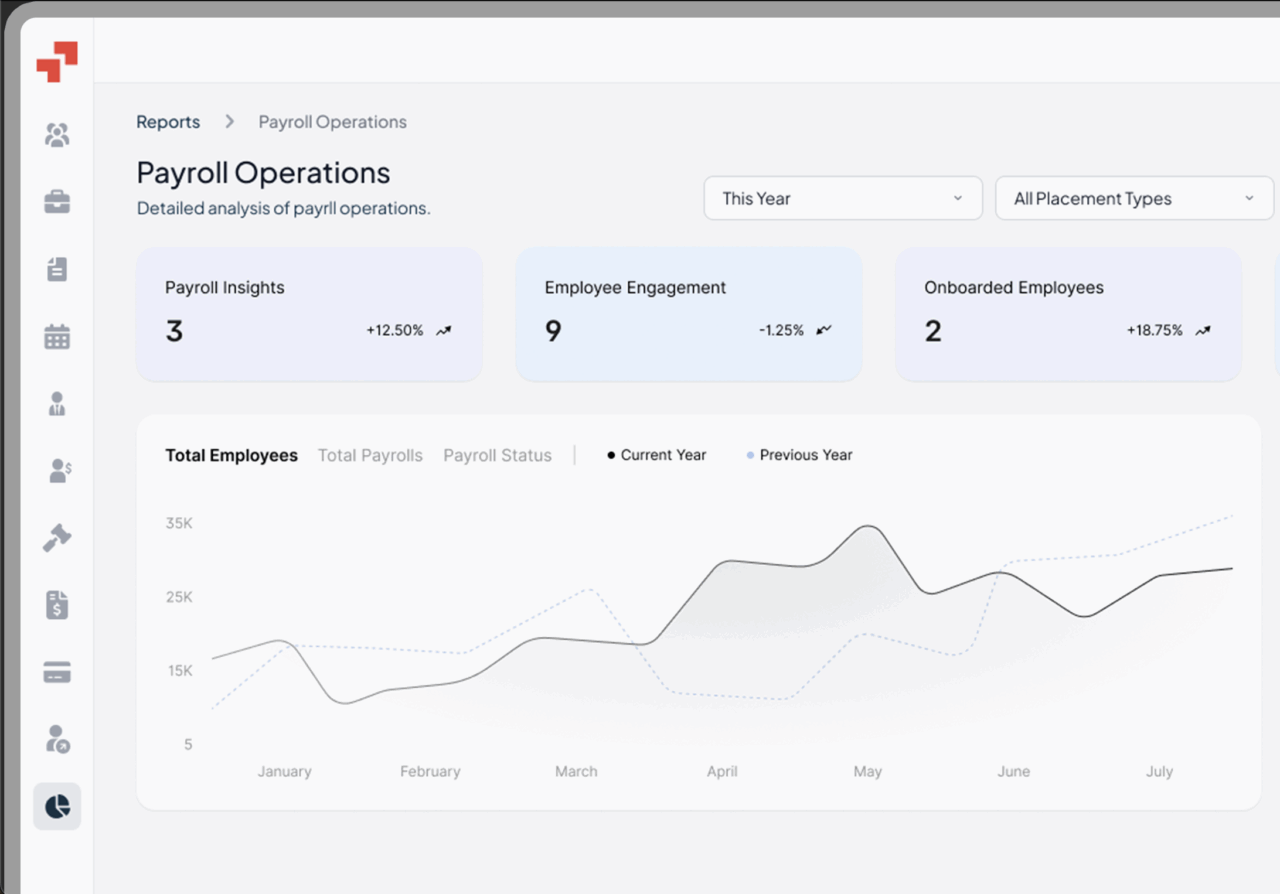Global Workforce GlossaryChief Human Resources Officer
Related Terms
HR Director
Global HR Manager
HR Business Partner (HRBP)
Human Capital Management (HCM)
Organizational Development (OD) Manager
In today’s dynamic workplace, the role of the Chief Human Resources Officer has evolved far beyond traditional HR functions. It now encompasses culture building, leadership development, and driving transformation through people-centric strategies.
Table of Contents
- What is career mobility?
- What is internal career mobility?
- How could mobility play a part in choosing a career?
- What is career mobility partnership?
- What is career mobility program?
- What is the meaning of work mobility?
- What is another name for career mobility?
- Define job immobility
- What is employee mobility process?
- What are the types of career mobility?
- What is career mobility in a corporate hierarchy?
- Example of Career mobility
- Practical Case Study: Career Mobility in Action
- How PamGro Supports Career Mobility
What is Chief Human Resources Officer?
A Chief Human Resources Officer (CHRO) is a senior executive who oversees an organization’s entire human resources function.
The CHRO shapes company culture, drives talent strategy, and ensures HR initiatives align with overall business objectives. As a member of the executive team, the CHRO partners with the Chief Executive Officer (CEO) and other leaders to support long-term growth.
This role includes key areas that go beyond traditional HR tasks. The CHRO influences workforce planning, leadership development, succession planning, and organizational change management. Increasingly, CHROs also rely on data analytics to make informed decisions about employee engagement, performance, and retention.
What does Chief Human Resources Officer do?
The CHRO leads strategic human resources planning, develops policies, and ensures compliance with labor laws. They manage recruitment, compensation, performance management, and learning programs, while also shaping diversity, equity, and inclusion strategies.
A CHRO’s responsibilities often expand to include business transformation and global workforce management, which are essential for achieving a sustainable competitive advantage . For example, they may guide mergers and acquisitions from a people perspective, showcasing their leadership role in ensuring smooth cultural integration. They also act as a trusted advisor to executives on how talent strategy impacts business growth. By aligning HR with financial, operational planning, and a robust human capital strategy, the CHRO ensures the company’s workforce becomes a true competitive advantage.
How to become Chief Human Resources Officer?
To become a CHRO, professionals typically start with a bachelor’s degree in human resources, business administration, or a related field. Many pursue advanced qualifications such as an MBA or specialized HR certifications.
Career progression usually involves gaining experience across HR functions—recruitment, employee relations, compensation, and change management. Professionals often advance into director-level or vice president roles before moving into the CHRO position. Networking, leadership training, and proven success in aligning HR strategies with business objectives are also critical. Building a personal brand as a thought leader in HR transformation can accelerate the journey.
What is the Role of a Chief Human Resources Officer?
The role of a CHRO is to align people strategies with business objectives. They focus on workforce planning, leadership development, and maintaining a strong company culture.
In modern organizations, the CHRO also serves as a business partner to the CEO and board. They bring insights on employee engagement, productivity, and risk mitigation. This makes the role pivotal in supporting growth and sustainability while ensuring compliance and organizational agility in a rapidly changing business environment. Increasingly, CHROs act as cultural architects—building environments where employees thrive and innovation flourishes.
What Is the Salary Range of a Chief Human Resources Officer?
CHRO salaries vary by company size, industry, and geography. In the United States, the average salary for a CHRO ranges from $180,000 to $300,000 annually, with larger corporations often exceeding $400,000.
Beyond base salary, CHROs frequently receive bonuses, equity packages, and other executive benefits. Compensation reflects the role’s importance in driving business outcomes. For international roles, salaries differ significantly, with emerging markets offering competitive packages tied to growth opportunities and local labor costs. These numbers continue to rise as organizations recognize the CHRO’s influence on profitability, culture, and long-term sustainability.
Chief People Officer vs Chief Human Resources Officer
The terms “Chief People Officer” (CPO) and “Chief Human Resources Officer” (CHRO) are often used interchangeably, but subtle differences exist. A CPO usually emphasizes culture, engagement, and employee experience, while a CHRO focuses more broadly on compliance, policies, and strategic workforce planning.
In practice, the roles overlap significantly. Companies may choose one title over the other to signal their emphasis—“people-first” organizations often prefer CPO, while traditional enterprises stick with CHRO. Both roles ultimately ensure talent aligns with business objectives. The choice often comes down to positioning: CPO conveys a modern, employee-centric tone, whereas CHRO communicates executive authority.
Chief Human Resources Officer vs Director of Human Resources
A CHRO is a C-suite executive responsible for overall HR strategy, while a Director of Human Resources manages day-to-day HR operations.
The CHRO influences high-level decisions, works directly with the CEO, and oversees long-term workforce planning. The Director of HR, by contrast, ensures execution of policies, manages HR staff, and focuses on operational efficiency. Many directors aspire to become CHROs by broadening their strategic impact and business acumen. In short, the Director ensures the HR engine runs smoothly, while the CHRO determines where the engine should take the business.
What are Chief Human Resources Officer Requirements
Requirements for becoming a CHRO typically include a bachelor’s degree in human resources, psychology, or business administration. Many organizations prefer advanced degrees such as an MBA.
Extensive HR leadership experience is essential, along with expertise in talent management, compensation, labor relations, and change management. Increasingly, skills in data analytics, digital transformation, and diversity and inclusion are critical. Most CHROs have at least 15 years of progressive HR experience before reaching the C-suite. Executive presence, negotiation skills, and global perspective are now seen as non-negotiable requirements.
What is the role of a Chief HR Officer?
The role of a Chief HR Officer (CHRO) is to create and execute HR strategies that directly impact organizational success. They ensure HR policies are aligned with business objectives, while also fostering employee growth and satisfaction.
In addition, the CHRO helps manage risk by ensuring compliance with labor regulations and ethical practices. They lead initiatives in leadership development, workforce planning, and employee well-being—making them a central figure in shaping both performance and culture. As organizations expand globally, the CHRO’s role increasingly includes managing distributed teams and complex compliance landscapes.
Who does the CHRO report to?
In most organizations, the CHRO reports directly to the Chief Executive Officer (CEO). This reporting structure ensures that HR strategy is integrated into core business decision-making.
In some cases, particularly in large corporations, the CHRO may also work closely with the board of directors on executive compensation and succession planning. This direct line to top leadership underscores the strategic importance of the role. In highly regulated industries, CHROs may also report findings to compliance committees or external regulators, reinforcing accountability at the highest levels.
How to succeed as a Chief Human Resources Officer (CHRO)?
Success as a CHRO requires balancing strategic vision with operational execution. Strong leadership, communication, and analytical skills are critical. A successful CHRO leverages data analytics to measure HR impact, drives change management, and maintains trust across the organization.
Building strong relationships with executives, advocating for diversity and inclusion, and staying ahead of workforce trends are also key. Ultimately, success means aligning talent initiatives with business growth while fostering a thriving company culture. Great CHROs are continuous learners, adapting quickly to shifting labor markets and emerging technologies.
Practical Example: CHRO Responsibilities in Action
Imagine a SaaS company preparing to expand into three new international markets within 12 months. The CHRO plays a critical role in talent acquisition by leading workforce planning, assessing local labor laws, and ensuring compliance with international hiring standards.
They collaborate with the CEO to build leadership pipelines and implement change management strategies. By leveraging data analytics, they track employee performance and engagement across regions. The CHRO ensures a seamless integration of new talent while maintaining company culture, helping the business expand efficiently without major compliance risks. Their leadership prevents costly missteps and accelerates market entry.
PamGro and the CHRO Role
At PamGro, we understand the challenges CHROs face in building global teams. From navigating compliance and tax regulations to managing payroll across multiple countries, these responsibilities can quickly overwhelm internal HR teams.
PamGro’s Employer of Record (EOR) services simplify global expansion. We enable CHROs to hire international talent quickly without setting up foreign entities, ensuring compliance and reducing risks. With PamGro as your global HR business partner, your CHRO can focus on strategic initiatives—culture, leadership, and performance—while we handle international hiring complexities. Partnering with PamGro empowers your HR function to scale confidently and sustainably.
Hire the Best Talent, Anywhere






